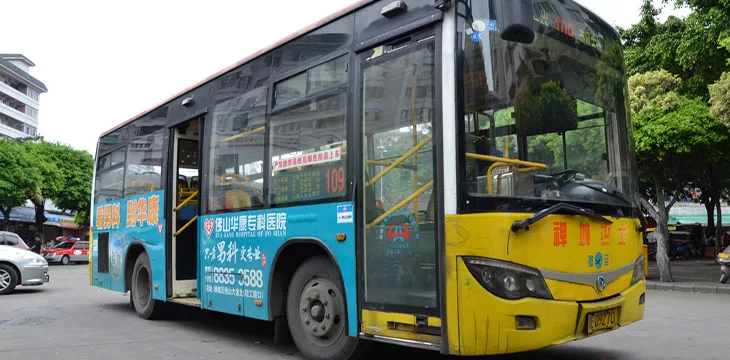|
Getting your Trinity Audio player ready...
|
The Chinese city of Jinan has announced that residents can use digital yuan to pay for their bus rides across all bus routes with the exclusion of customized buses.
The city is keen on building on the previous successes recorded after integrating the central bank digital currency (CBDC) into its public transport system, according to local news outlet Shunwang News. In 2021, Jinan experimented with digital yuan payments on the B52 and BRT5 bus lines, with city officials set to expand the service to all lines.
“In order to make travel more favorable for citizens and passengers, from July 1st to September 30th, Jinan Public Transport will continue to cooperate with CCB Jinan Branch to jointly carry out the second phase of ‘DIgital Spring City Low-Carbon Travel,'” the announcement read.
Passengers can use their digital yuan wallets to make payments for fares. City administrators are hoping to enhance the deal by adding daily discounts for users using the CBDCs to pay their bus fares.
For fares below 2 yuan ($0.28), passengers will be allowed to pay 1 cent bus fares up to six times a month. The pilot will run until September 30 and is designed to enable administrators to test-run a full-scale application of the digital yuan with a wider pool of participants.
“When passengers take all urban lines of Jinan Public Transport Group other than customized buses, they can use the CCB digital RMB wallet of the second class and above to pay,” the report stated.
China’s public transport system is quickly becoming a favorite testing ground for CBDCs as several cities have launched CBDC test pilots. Guangzhou, Ningbo, and Beijing are also experimenting with digital yuan adoption in their public transport sectors.
Luring users to the digital yuan
The People’s Bank of China (PBoC) has reeled out several initiatives to push for increased adoption rates for the CBDC after a marked decline in metrics. The city of Changsu announced that it will begin paying the salaries of civil servants in digital yuan, while other cities have hinted at using the CBDC for tax payments.
On the technical side of things, the central bank is experimenting with many functionalities, including offline and cross-border payment, integration in securities trading, and an inclusion of the red envelope feature.
To learn more about central bank digital currencies and some of the design decisions that need to be considered when creating and launching it, read nChain’s CBDC playbook.
CoinGeek Conversations with Lise Li: Why Bitcoin SV will succeed in China

 09-16-2025
09-16-2025 





